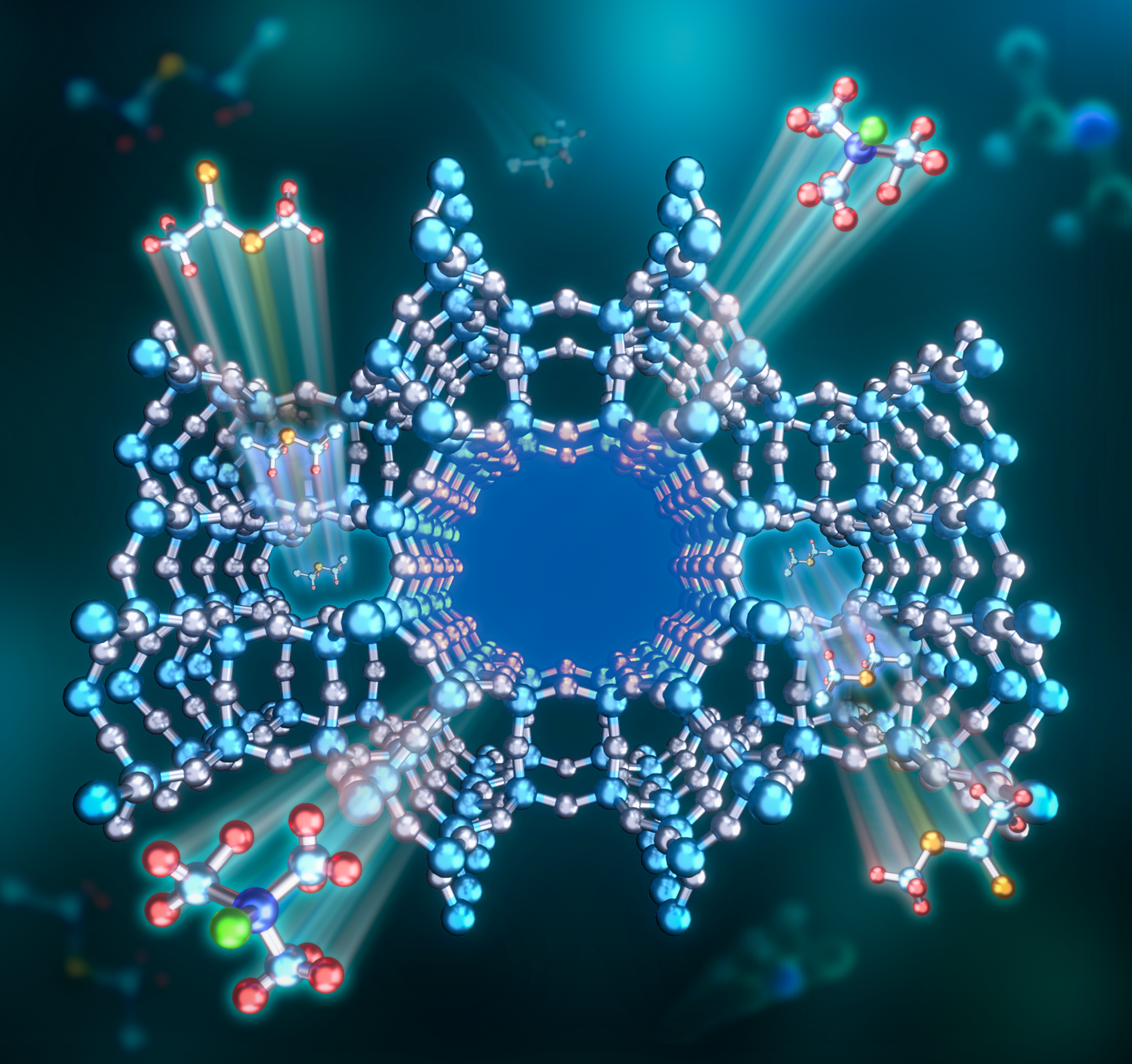Zeolites, as one type of shape-selective catalysts, have played indispensable roles in various fields such as petroleum refining and the chemical industry. The characteristics of zeolites, in contrast to other materials with similar chemical constitutions, come from the structural confinement on the molecular dimensions, which is crucial for shape-selective catalysis. The catalytically acid sites at different positions of zeolites show a distinct confinement effect for reactant molecules, especially reflected in a mordenite (MOR) zeolite catalyzing a dimethyl ether (DME) carbonylation reaction. The 8-membered ring (8-MR) channels are preferred for the selective carbonylation of DME, in contrast, the larger 12-MR channels could accommodate more reaction routes, which will cause rapid deactivation of the MOR zeolite. Therefore, it is necessary to selectively remove the acid sites in 12-MR channels of MOR to improve its catalytic performance in the DME carbonylation reaction.
Recently, the research team led by Profs. LIU Zhongmin from the Dalian Institute of Chemical Physics of the Chinese Academy of Sciences reports a strategy to preferentially remove the acid sites in the 12-MR channels of MOR zeolite by a trimethylchlorosilane (TMCS) silylation treatment, which could significantly improve the DME carbonylation performance.

In this work, the combined use ofin situDRIFT and29Si CP NMR spectroscopic techniques has been employed to investigate the interaction of trimethylchlorosilane (TMCS) molecules with the bridging hydroxyl groups within different positions of the HMOR zeolite. TMCS molecules bridge on the HMOR framework via a hydrolysis reaction between chloro groups and Brønsted H+atoms to cover the acid sites. Due to the space limitation, the silylation treatment selectively retains most of the acid sites (80%) in the desired position (8-MR environment) by TMCS replacing the Brønsted H+atoms within 12-MR channels in the HMOR zeolite, which leads to a better performance in the DME carbonylation reaction.
This work puts forward a facile strategy selectively control the distribution of acid sites within different confinement positions of zeolites to improve the catalytic selectivity of catalysts.
This result, entitled “Selective Removal of Acid Sites in Mordenite Zeolite by Trimethylchlorosilane Silylation to Improve Dimethyl Ether Carbonylation Stability”, was published inACS Catalysis(DOI: 10.1021/acscatal.1c05896) and selected as the Front Cover. This work was supported by the National Natural Science Foundation of China, the International Partnership Program of Chinese Academy of Sciences, the Key Research Program of Frontier Sciences, Chinese Academy of Sciences. (Text and picture by LIU Rongsheng)”
Selective Removal of Acid Sites in Mordenite Zeolite by Trimethylchlorosilane Silylation to Improve Dimethyl Ether Carbonylation Stability. Rongsheng Liu, Shu Zeng, Tantan Sun, Shutao Xu, Zhengxi Yu,* Yingxu Wei, Zhongmin Liu*, ACS Catalysis, 12: 4491−4500, 2022.